5 Design Ideas for Low Maintenance Parking Lots

Commercial parking lots can be challenging to design, especially if you want one that doesn’t require much maintenance. With so many different options in terms of paving materials, peripheral features, and other aspects of your parking lot, it can be hard to sift through all your choices.
Low Maintenance Parking Lot Design Ideas
That’s why we’re here to narrow it down for you and make the construction of your commercial parking lot a breeze. In case you need some clever ideas on how to reduce the maintenance requirements of your lot, here are 5 design ideas to experiment with:
1. Stabilized Gravel

The main share of maintenance you’ll have to perform on a commercial parking lot will be on the pavement itself. Asphalt and concrete are the two most common pavement types for commercial parking lots, and they require a ton of maintenance.
They don’t do well in extreme temperatures, and both types of pavements will eventually require massively expensive maintenance projects like resurfacing and repaving.
One way to eliminate high-maintenance materials like asphalt or concrete is to opt for a better alternative, such as stabilized gravel. Loose gravel ruts easily and causes dust, but if you stabilize it with permeable pavers, it’s perfect for building low maintenance parking lots.

Permeable plastic pavers like the kind produced by TRUEGRID are made from 100%-recycled plastic and can perform as well as asphalt and concrete, without breaking down.
These pavers are just as, if not more durable than asphalt and concrete, but you can drive on them day-in and day-out for decades without ever having to perform any significant maintenance on them at all.
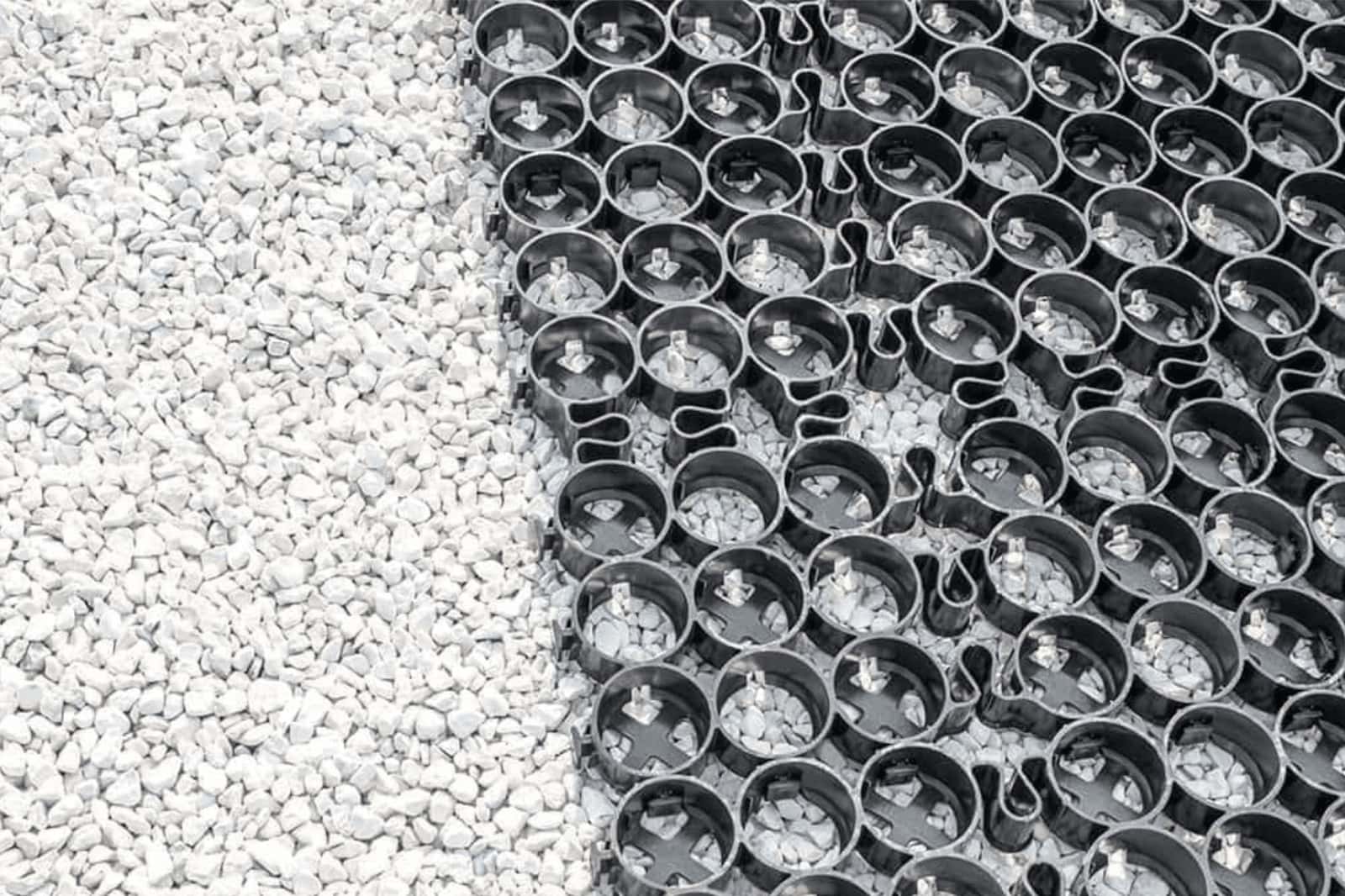
They’re also better for the environment and have plenty of stylistic diversity, allowing you to build low maintenance parking lots that look professional and stylish.
2. Grass Parking
Another slightly less conventional way to build low- maintenance parking lots is to use grass pavers that can turn a plain grass lot into a perfectly suitable parking lot. They’re also easier to install because you don’t need a permit to build a parking lot with them.
You simply snap them into place over your desired parking area and roll them into the ground with a vehicle or heavy roller. Once in place, they won’t move or sink into the ground. You can even allow grass to grow right up through them to create “hidden” parking spots, though you can just as easily keep the grass short for maximum visibility.

Much like the pavers used for gravel, these permeable grass pavers are made from incredibly durable, 100%-recycled plastic. They require almost no maintenance and allow you to operate a unique, fully-functional parking lot that’s eco-friendly and cost-effective.
3. Zeroscaping
Although choosing a low-maintenance pavement material is crucial to minimizing maintenance requirements for your commercial lot, there are other aspects to consider as well. The landscaping around and within your lot should be another consideration for you. Some types of landscaping require quite a bit of maintenance, while some require almost none at all.
Zeroscaping is particularly popular in dry, warm areas like the Southwest. It involves using almost no plants or trees for your landscaping, instead opting for dirt, gravel, rocks, stones, and cactus.
This is the most effective way to minimize landscaping maintenance in your parking lot, and it can be done to great stylistic effect if used correctly. Winding pathways, benches, statues, rock gardens, and bird feeders are all low maintenance design ideas you can incorporate into a zeroscape.
4. Trees
If you want to have a somewhat decorative landscape that doesn’t need much maintenance, trees are perfect. They’re nice to look at, they can help guide the flow of traffic in certain parking lot layouts, collect almost no trash, and help stabilize the soil around them.
Trees require very little watering once their roots have been established and they will serve your parking lot faithfully for decades to come.
5. Fencing
A lot of people like to use shrubs instead of fencing because they look better and feel more open than fencing. Shrubs, however, require constant trimming and watering. They also tend to collect trash.
If you’re open to doing away with shrubs, consider using a low or semi-transparent fence for your barriers instead. As long as you don’t use a material like natural hardwood that needs to be painted and stained, you should be able to set-and-forget your fence for many years.
Commercial Parking Lots Thrive with Low Maintenance Materials
Unless you’ve got the budget for constant landscaping and parking lot maintenance, it’s wise to build a low maintenance parking lot. The five ideas we’ve laid out here for you are an excellent place to start.
By implementing some permeable pavement, zeroscaping, fencing, and trees, you can rest assured that your commercial parking lot will look great and last for decades without needing much maintenance at all.
Get a head start on low maintenance parking and contact a paving expert at TRUEGRID today.

In the small town of Rifle, CO, the Garfield County fueling station was dealing with a big problem. The gravel used to pave their fueling station couldn’t handle the weight of constant traffic from big trucks. The constant braking and turning of the trucks was causing the gravel to spread, get muddy, and rut.
This is a common occurrence with unstabilized gravel, but rather than simply pave the fueling station area with asphalt, River City consultants decided to opt for an alternative solution. They determined that asphalt would not stand up well enough to the pressures of big trucks, and concrete was out of their budget. Besides that, both asphalt and concrete would require maintenance and produce runoff from stormwater.
After contacting TRUEGRID about using PRO PLUS® pavers to pave the area, the fueling station received a complete overhaul. 23,550 sq ft of TRUEGRID PRO PLUS® pavers were installed at the fueling station. They were installed over a 6-inch sub-base filled with CDOT class 6 aggregate, and the empty pavers were filled in with ⅜” screened rock at a depth of 1.8”.

Garfield County was incredibly pleased with the results. TRUEGRID was able to save them $12,000 on the fueling station alone by using permeable plastic pavers instead of concrete. Now they have a fueling station that will never rut, hold standing water, or washboard.
Buoyed by the outcome of the fueling station project, the county decided to install TRUEGRID another 22,000 sq ft of PRO PLUS® pavers in its fairgrounds. The tractor-trailer staging and parking area also needed new paving and was originally slated for an asphalt installation. By selecting TRUEGRID pavers instead, they were able to save another $11,000.

The amount of money Garfield County was able to save by utilizing TRUEGRID permeable pavers is incredible, but not surprising. Equally as impressive, however, was the positive environmental impact this massive project was able to generate. Nearly 135 tons of CO2 were saved, which is equivalent to planting about 28,400 new trees. There were also over 60,000 lbs. of plastic saved, which is equivalent to about 455,000 plastic jugs.
In addition, the 88,488 gallons of stormwater they are now able to detain is equal to 2,212 large bathtubs full of water. When you consider what kind of runoff and erosion that much water falling on asphalt would generate in a short period of time, it’s extremely beneficial that TRUEGRID pavers were able to help prevent it.
TRUEGRID is Ideal for Fueling Stations

The heavier-duty pavers that TRUEGRID produces are the perfect solution for any fueling station. Gravel, asphalt, and concrete are basically the only other viable options for a fueling station, and none of them are ideal.
Asphalt isn’t strong enough to handle the kind of weight, pressure, and traffic that comes through a fueling station. It will break down quickly and need costly repairs. Concrete is able to hold up better, but is very expensive and also will require costly maintenance in the future.
Unstabilized gravel is as cheap as it gets but the frequent maintenance of a gravel lot adds up. The amount of time and man-hours wasted in constantly tending to it makes it an unwise choice as well. TRUEGRID pavers have the incredible durability needed to handle the needs of a fueling station over the long-term.
Not only that, but TRUEGRID pavers are so resilient they require almost zero maintenance throughout their lifetime. They’re also strong enough to handle the weight of a daily 18 wheeler traffic. The installation process is also much faster than that of concrete or asphalt.
You could be waiting weeks or months for a big asphalt or concrete install, but TRUEGRID pavers can be installed in a mere fraction of that time. The 100% recycled plastic used in the production of TRUEGRID pavers is eco-friendly. There’s no need for sloping, added drainage, or detention ponds when the pavement itself has built-in drainage.
All of this adds up to massive savings across the board, and installing TRUEGRID now will put you in a position to reap the benefits for decades to come. If you need to pave a large area or an area that sees a lot of heavy traffic, there’s no question that TRUEGRID permeable pavers are the best choice you could make. Not only are they durable, permeable, eco-friendly, and affordable, but they also look very professional and clean.
Don’t burden yourself with an expensive asphalt or concrete install that’s going to drain your finances long into the future when you could get all the same benefits for a fraction of the overall cost.
Contact TRUEGRID pavers today for a set-it-and-forget-it solution to all of your paving needs.

Gravel driveways and walkways are commonly used by many homeowners and business owners alike. The affordability of gravel and relatively low maintenance requirements make it one of the simplest and most efficient materials for paving areas that need to accommodate foot and vehicle traffic.
However, anybody with a gravel driveway or walkway knows that the number one downside to using unstabilized gravel as a paving material is the fact that it spreads and moves around. Gravel is made up of many small pieces of rock and when used as pavement, it tends to migrate and spread out when subjected to constant pressure and friction.
Tips to Keep Gravel in Place on Walkways and Driveways
Thankfully, there are plenty of ways to deal with unstabilized gravel. In case you’re looking to maintain gravel driveways and walkways as best as possible, let’s take a look at how to keep gravel in place on walkways and driveways:
1. Increase the Depth
For those wondering how to keep gravel in place on a driveway, this may be the easiest option. The main reason gravel spreads in driveways and walkways is because it’s not been laid thick enough.
The top layer is always going to spread a little bit without borders or pavers but if you lay at least 3 inches of gravel, the weight will help compact it and sink it deeper into the ground. You can even lay more than 3 inches, just be careful not to go too deep or the gravel will inevitably become loose and start to spread.
2. Tamp and Pack
One easy, DIY way to help prevent the spread of gravel is to tamp and pack it a bit. This simply means using a hoe or other tool to pack your gravel down tightly, and then spraying it down with water.
The water will help the gravel shift around and settle into place better, loosening the soil below and allowing it to better accept the rocks. Just remember not to go overboard with the watering, doing so will make your driveway run and lead to even more spreading.
You want it moist, not muddy.
3. Use Borders

Another way to stop gravel from spreading is to keep it in place with borders. Wooden planks or other durable material can be used to lay borders along the edges of your walkways and driveways. These borders will keep the gravel from spreading out, though they won’t prevent dips or ruts from potentially developing.
Wood is the best material to use for straight pathways and driveways, but if you’ve got to deal with curves you may want something a bit more flexible, like stones.
4. Permeable Plastic Pavers
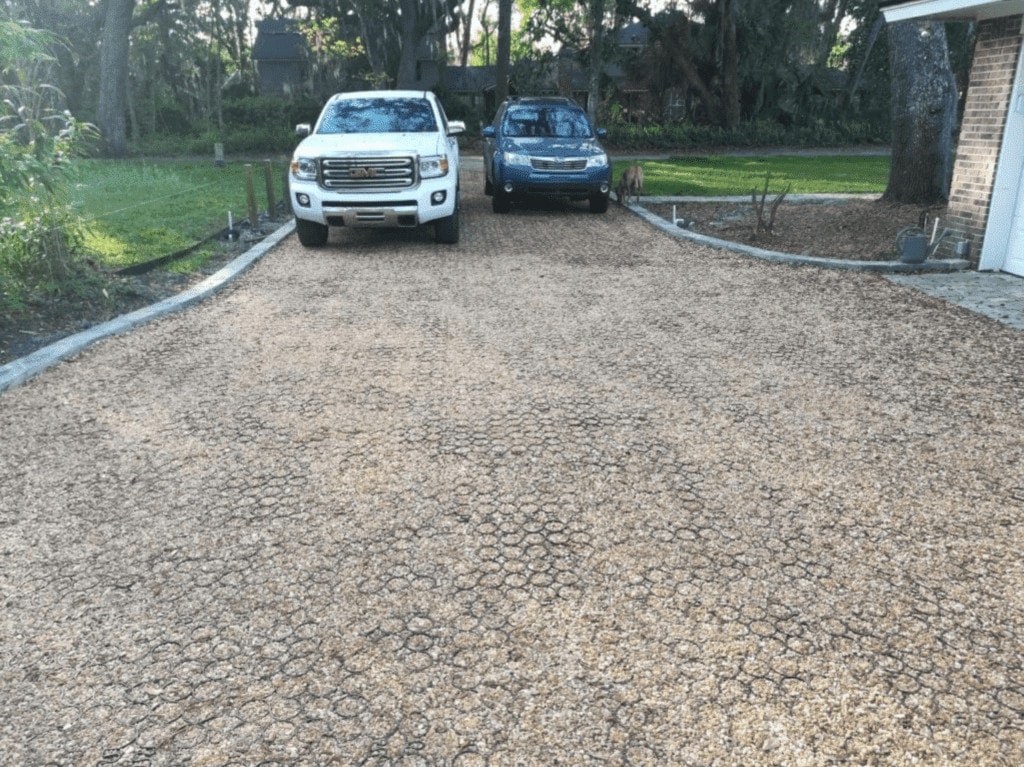
The most effective, durable, and low-maintenance way to stop gravel from spreading is by using plastic permeable pavers from TRUEGRID. Much like borders, they lock the gravel into place. However, the grid paver cells within each paver retain and keep the gravel from moving at all, even within the borders of the paver. This is the ultimate one and done solution.
The installation of TRUEGRID pavers is simple and can be completed with basic equipment in less than a day. After the top layer of gravel has been compressed into the pavers, your parking areas, driveways and pathways will never shift or spread again.
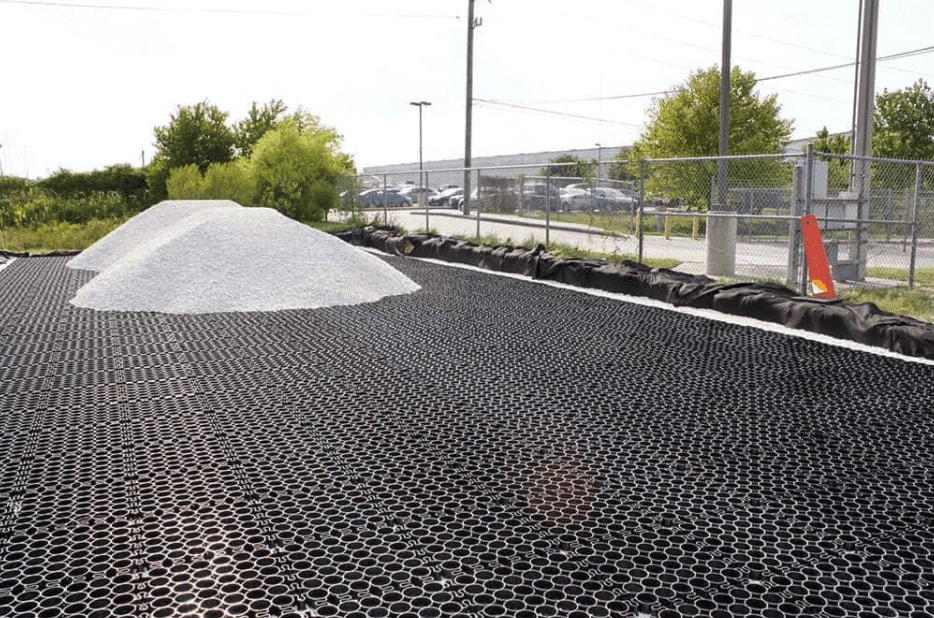
Once installed, your gravel driveways and pathways will require very little maintenance at all. Stormwater and all liquids will drain directly through the pavers into the soil below. TRUEGRID’s PRO PLUS® permeable plastic pavers are an example of an affordable and eco-friendly way to eliminate the spread of gravel.
By stabilizing your gravel with pavers made from 100% recycled plastic, you won’t have to worry about adding more gravel, wetting down your pathways, or taking any other measures to ensure your pathways and driveways don’t spread out. No more washboarding, ruts, or potholes.
TRUEGRID pavers can easily be saw-cut to accommodate curves, trees, and other obstacles. In terms of gravel stabilization, you can’t do much better than a cost-effective and permanent solution like the TRUEGRID PRO PLUS® paver system.
Stop the Spread of Gravel Once and For All
Use TRUEGRID PRO PLUS® or PRO LITE pavers if you want to stop gravel from spreading for good.
Not only will you benefit from the clean-cut, professional look of these durable and eco-friendly pavers, but you won’t have to waste another minute tending to loose, unstabilized gravel in your driveways and pathways.
Contact the paving experts at TRUEGRID today for a product sample and project estimate.

Parking has benefited from an incredible amount of innovation over the past 20 years or so, but even with all the changes we’ve seen up to this point, there’s still a long way to go.
Parking Innovations in 2022
Next year, for instance, we’re poised to see some pretty incredible shifts in the way people park. From the inner cities to the rural countryside, let’s take a look at 7 parking innovations we can expect to see in 2022:
1. Grass Parking

Parking on grass might sound like a step backward in terms of parking innovations until you take a closer look. TRUEGRID has recently come out with the ROOT system for turning ordinary grassland into stabilized, durable parking.
With the ROOT system, all you need to do is wet your grass, snap the permeable plastic pavers into place, and compress them into the ground with a roller or heavy vehicle to lock them into place.
This innovation allows anybody to stabilize their grass and make it perfect for overflow parking. The best part is, the grass will grow up through the pavers, essentially creating extra parking spaces without eating into your green space.
2. Robot Valets
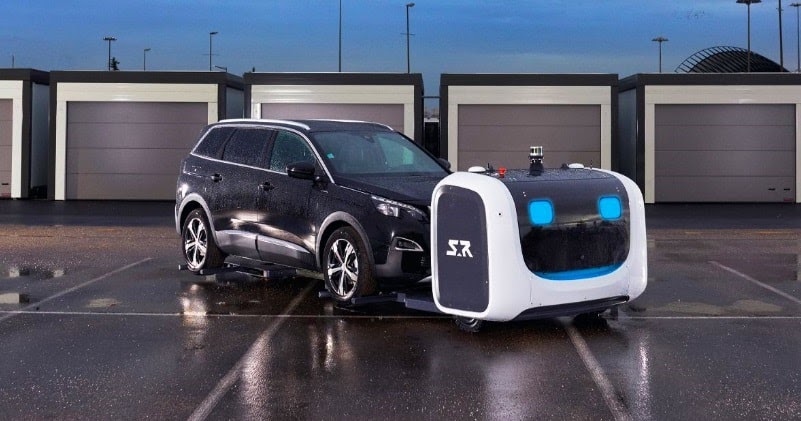
Parking your vehicle at a crowded restaurant, business, or airport is not something you should have to worry about. That’s where robot valets come into play. Simply drop your vehicle off at a pre-designated cabin space and a robot will come and take it to a parking lot where all the cars are closely parked together.
When you’re ready to leave, the valet robot will retrieve your vehicle and bring it back to the pre-designated cabin space for you to pick up. This helps businesses pack many more cars into their lots and drastically lowers the rate of minor parking accidents, as the robots have zero margins for error.
3. Permeable Pavement
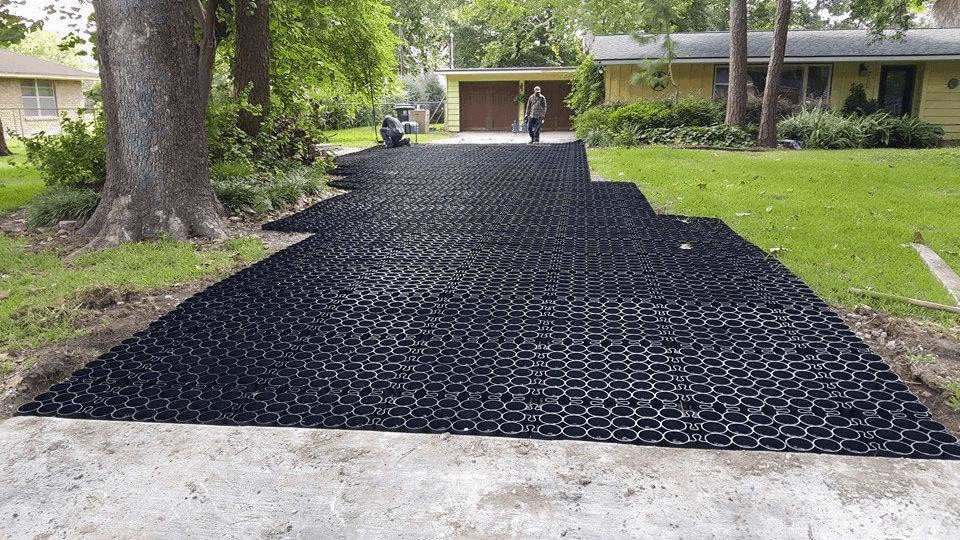
Another parking solution that’s expected to be in high demand is the PRO PLUS® permeable pavement system from TRUEGRID. Their permeable plastic pavers are made from 100% recycled plastic and are tough enough to handle the weight of a falling monster truck without breaking. TRUEGRID is used in industrial 18 wheeler parking but is economical enough to use in your small business or even your home.
In areas with stormwater management issues, this permeable pavement can be used to manage stormwater instead of costly drainage systems and retention ponds. They allow water to drain directly through them, which means you can use more of your land for parking spaces instead of drainage. Fill the grid cells with gravel or grass based on your application.
They’re also very quick to install and require almost no maintenance over their lifetime, a vast improvement over traditional paving materials like asphalt and concrete.
4. Stacked Parking
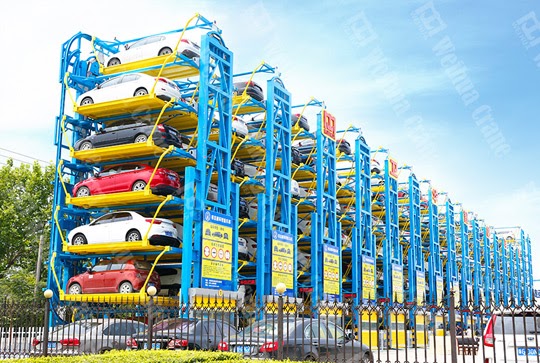
For those of us with more cars than we can fit into our allotted parking space, stacked parking is here to save the day. Car parking lifts are mechanical lifts that can be used to lift and park cars above each other vertically. Some are able to stack more than three cars on top of each other.
For both residential homeowners and commercial business owners who are pressed for space, vertical parking is one of the best parking innovations to help you make the most out of what you’ve got.
5. Pay-by-Plate
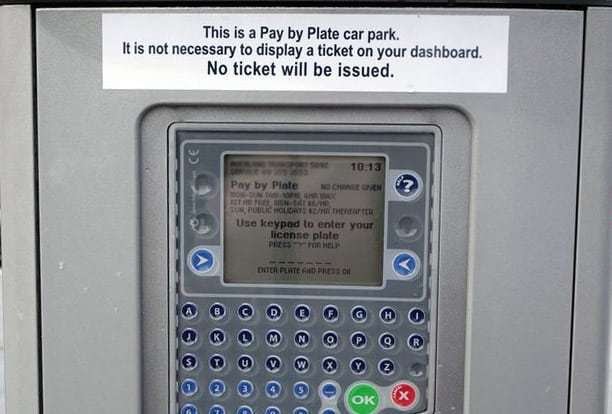
Manual parking meters are outdated. You shouldn’t have to run back to your vehicle and put more money in the meter if you need to extend your stay. Thankfully, with pay-by-plate parking, you won’t have to.
It works by using parking kiosks to help you reserve a spot. You just punch your license plate number in and pay with a credit or debit card. If you need to extend your stay, you can do so remotely via a parking app.
This is going to be the new normal for inner-city residential parking, and it’s expected to ramp up in 2022.
6. Pollution-Based Parking Rates
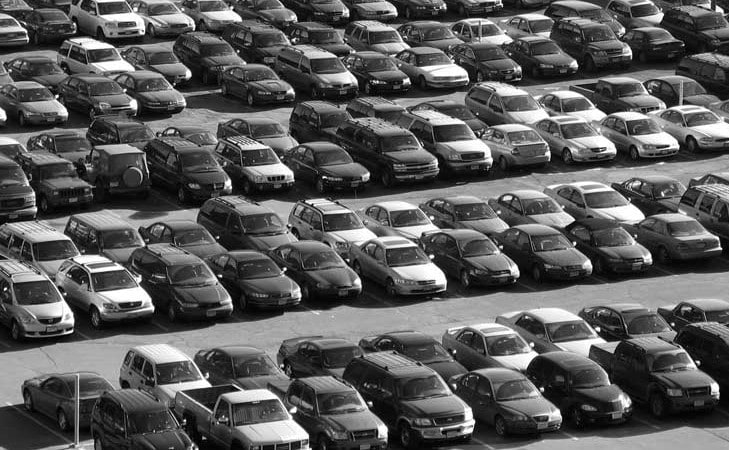
Every vehicle is estimated to put out a specific level of carbon emissions. With pollution-based parking, vehicles that run on diesel or have higher emission rates would be charged higher rates for parking.
This can help cities with poor air quality incentivize cleaner vehicles. Hybrids would get a sizable discount, while fully-electric vehicles would park for free.
7. Resident Rates

One way to reward residents of a big city is to give them parking priority over tourists. In popular cities like Miami, for instance, this would mean charging residents of the city much less for metered parking than non-residents.
Doing so would make it easier for residents who actually pay taxes in the area and give them a nice reward for being a member of the community.
Big Changes to Parking are on the Way in 2022
If you’ve ever had problems with parking, 2022 will be a golden year for you. We can expect a cleaner and less stressful parking experience that benefits people and the environment as well.
From residential options like grass paving and permeable pavement, to robot valets and parking meters that run on mobile apps, there’s no shortage of new parking innovations to be excited about next year.
To get a head start on an innovative parking solution, contact the paving experts at TRUEGRID today.

